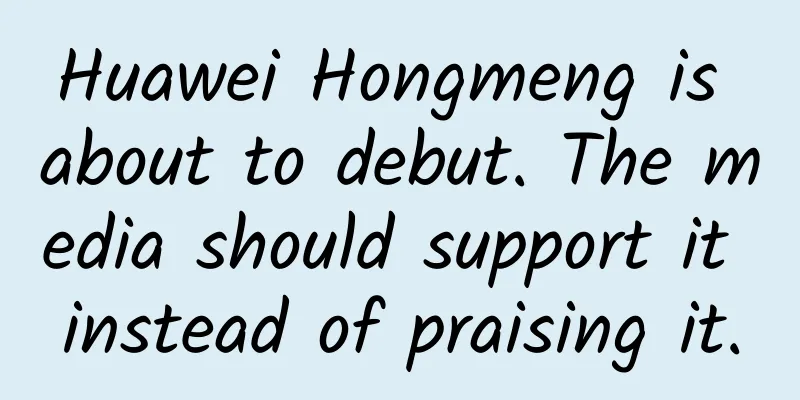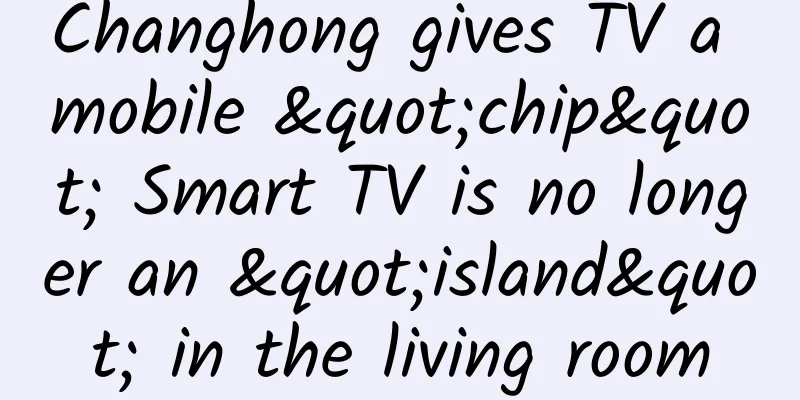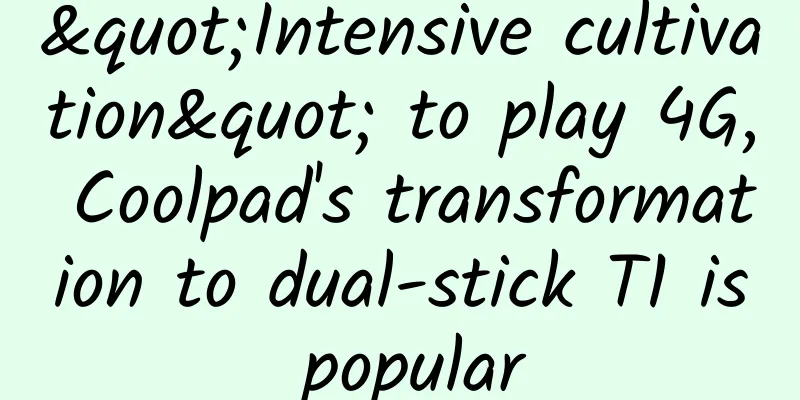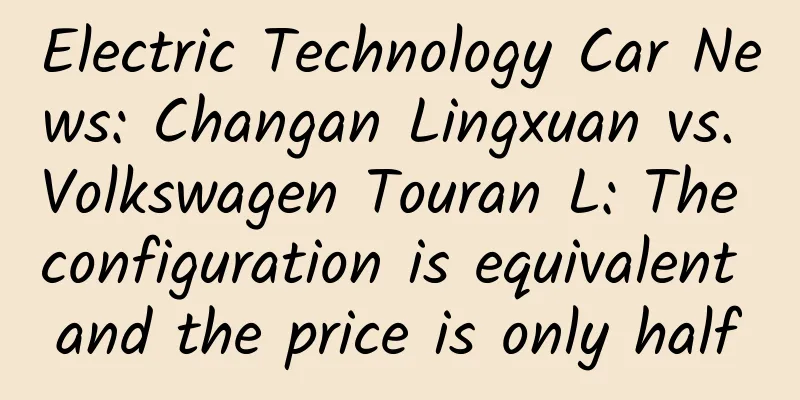Huawei Hongmeng is about to debut. The media should support it instead of praising it.

|
On May 19 this year, according to the latest report from Reuters, Google has suspended its business with Huawei. People familiar with the matter said: "This means that Huawei can only use the public version of Android and cannot access proprietary applications and services from Google," including but not limited to Play Store, Gmail and YouTube. Faced with the grim reality of Google's participation in containment and sanctions, Huawei quickly launched the Hongmeng system that it had been quietly developing for 12 years, sounding a strong voice in the Chinese technology community against US trade protectionism. On May 21, Huawei's consumer CEO Yu Chengdong said in an old friend group created by Internet figure Fang Xingdong: Huawei's self-developed operating system will be launched this fall and will be available in the market at the latest next spring. (Excerpt from Yu Chengdong’s speech to Fang Xingdong’s old friends group) This news completely ignited the emotions of netizens. Microkernel, Ark compiler, 60% performance improvement, compatibility with Android applications, and connecting all platforms became the five key words that must be mentioned when mentioning Hongmeng system. With the preparation of Hongmeng system release and the disclosure of these five key information, rumors, praises, and suggestions also came one after another. The news that Hongmeng will be released in late June, Xiaomi phones will be upgraded to Hongmeng system, and an American spy was arrested inside Huawei are all rumors. Huawei or relevant parties have already refuted the rumors. (Xiaomi PR refuted the rumor that Xiaomi will upgrade to Hongmeng system) The arguments that Huawei's microkernel and new compiler are victories in principle, that Hongmeng will basically replace Android in five years, and that Huawei has made Google unable to remain calm are all praises. Some people suggest that Huawei should take advantage of the scalability of the microkernel, improve embedded devices, form a unified ecosystem, and truly allow the software installed on Hongmeng to be compiled once and used everywhere. The author advocates that before Huawei's new system discloses more information, rumors should be suppressed, praise should be moderate, and suggestions should be in line with reality. At present, many media workers are eager to see China's independent operating system grow up, and have many unrealistic expectations and estimates of Hongmeng's performance. In fact, what China's independent operating system and Hongmeng need to truly develop is long-term attention and support from the public opinion, rather than extreme indifference when there is no foreign sanctions, and wantonly exaggerating its role and performance when foreign sanctions are imposed. I think this is a kind of flattery. Huawei Hongmeng's use of a microkernel may not have a significant performance advantage When mentioning that Huawei Hongmeng adopts the microkernel technology route, almost all domestic media will emphasize that the microkernel is more advanced, represents the future, has stronger performance, and has excellent scalability. Indeed, microkernels appeared later, are more attractive in concept, and have many advantages in theory. However, as far as the operating systems currently in use are concerned, operating systems using microkernels do not have an advantage in performance. Most people may not be familiar with microkernels and macrokernels, but almost everyone has used Windows, and the kernel of Windows is a microkernel. Compared with Linux, Windows has almost no performance advantage. Taking the supercomputing field, which places the most emphasis on performance, as an example, as early as 2012, in the list of the world's top 500 supercomputers announced by the international TOP500 organization, Linux occupied the operating system position of 462 of the top 500 supercomputers, accounting for 94.2%. (Percentage of Linux in the top 500 supercomputers in 2012) In the 2017 Top 500 Supercomputer Competition, 498 of the 500 machines were running Linux, and the remaining two were running Unix, which was one more than last year. In 2018, the Linux kernel completely dominated the operating system of the Top 500 supercomputers. In sharp contrast, Windows, which was developed nearly a decade earlier than Linux and uses a so-called advanced microkernel, has been losing ground in the supercomputing field. Its market share of the top 500 supercomputers has dropped from dozens at its peak to none in recent years. Therefore, Hongmeng's use of a microkernel may have some advantages, but we should not exaggerate this advantage. The performance experience that Hongmeng will ultimately have depends on the optimizations Huawei has made for it, rather than its strong performance just because it is a microkernel. The pressure of ecosystem management will be greater after adopting the microkernel The macro kernel is to integrate many parts needed by the system into the kernel. Taking the Linux system as an example, the process, thread management, memory management, file system, driver, network protocol and other parts are all in the kernel. It is like a Swiss Army knife, with strong coupling and high efficiency. A microkernel is a kernel that only has the most basic scheduling functions, and other system modules are made into processes outside the kernel. Each process only does one thing, and finally they are combined to realize the functions of the system, just like building blocks. The combination is very strong, and each process only affects a small part related to it, so the stability is also relatively strong. (Middleware similar in structure to building blocks) In principle, microkernels are more flexible and easier to modify than macrokernels. However, macrokernels are not almost impossible to modify as some media have said. It’s just that modifying macrokernels requires disassembling the “Swiss Army Knife” of the kernel, removing the corresponding parts, replacing, adding or deleting these parts, and finally moving them back into the kernel to check its compatibility and whether there are any errors and recompile the kernel. The building block microkernel is much easier to build. You just need to remove a piece and replace it with a new one. However, this convenience places high demands on the ecosystem control capabilities of the manufacturer. For example, after installing too many software or rogue software on Windows, the system will become stuck, and even if you uninstall these software, you cannot completely restore it to its previous state. This is because the Windows microkernel allows software vendors to write startup items and other content into the system process. With the addition of these "external building blocks", the microkernel will inevitably become larger and larger, and the speed will be seriously affected. At the same time, we must also see that Windows is a very mature system after all, and Windows Defender, which comes with Win 10, is one of the most powerful security software under Windows. The trend of application software disorder has been controlled with Microsoft's efforts. Although the Android system allows all applications to run in their own virtual machines, minimizing security risks and the difficulty of ecosystem management, the application software can directly use some system middleware, so problems such as automatic startup and unauthorized recording and video recording have been recurring. (Android's architecture and software framework can directly use some middleware in addition to using virtual machines) If Huawei uses a microkernel, how it will manage its ecosystem when it is not as strong as Microsoft and Google is also a question worth pondering. Ark compiler compatibility is a problem According to foreign media TechNave, Huawei, together with Tencent, OPPO, VIVO and other smartphone manufacturers, conducted tests on the performance of the Hongmeng system and gave the test results. The results show that compared with smartphones equipped with Google's Android operating system, smartphones equipped with Huawei's Hongmeng system have a system running speed 60% higher than the former! However, this does not mean that Tencent's software can be compiled directly with the Ark compiler and run on the Hongmeng system without modification, nor does it mean that the commands and parameters used when compiling with Google's original zygote compiler should be consistent. Of course, it is also unknown whether programs compiled with the Ark compiler can run on ordinary Android systems. On the other hand, according to current information, Hongmeng is compatible with Android, but can all application software run on Hongmeng without modification? These issues are the main issues that small and medium-sized software companies consider when deciding to migrate to the Hongmeng platform or develop Ark compiler versions. If they are not solved well, software vendors will have worries. How does Huawei's Ark compiler improve the performance of third-party applications? There is no official response yet, but there are two rumors circulating. One is that Huawei has made a deep modification to the original Android compiler to achieve a huge performance improvement, and the other is that Huawei has achieved this by translating Java code directly into machine code, bypassing the virtual machine. Of course, there is also a mixed theory that Huawei has made deep modifications to the original compiler by translating Java code directly into machine code, bypassing the virtual machine. Regarding the method of directly translating Java code into underlying machine code, the author believes that this is certainly beneficial to improving performance, but is not conducive to the portability and maintainability of the application and the security of the operating system. In short, there are many companies or groups in the world that write their own compilers, but most of them are only used in a very small range, and some of them are from famous companies, such as Intel's ICC. This is mainly because the software compatibility or hardware compatibility issues have not been properly resolved. Chairman Mao said: "When our comrades are in difficult times, they must see the achievements, see the light, and boost our courage." Therefore, it is understandable to praise and commend Hongmeng. At the same time, we should also see that it is also important to support Huawei in gradually solving the problems it may face. The future of the information industry's independence is bound to be bright, but the road is bound to be difficult. We should support it, but not flatter it. We should show historical patience and look forward to true glory. |
<<: Huawei's creation of Hongmeng should not be praised in a flattering way
>>: Two-year study reveals big problems for Android
Recommend
Let’s talk about effective strategies for attracting new users from 5 aspects
All roads lead to Rome, and all roads in Rome lea...
The Autumnal Equinox is here. Do a good job of "four preventions" and "three no leaks" to have a good autumn.
The Autumnal Equinox has arrived, indicating that...
Suifengshuo: The dark side of finance Baidu Cloud download
Suifeng said: Introduction to the black scene res...
What are the basic functions of Zhongshan WeChat catering mini program and the function list of the catering mini program?
Why do many catering companies now choose to deve...
Southerners eat lamb, but Northerners don’t understand!
Loading long image... Source: National Geographic...
Cannon fodder for Project Scorpio? Microsoft Xbox One S unboxing
Three years after the Xbox One was launched, Micr...
Activity operation plan planning process
The activity planning process is divided into the...
The Sumatran rhinoceros, of which only 30 remain, recently welcomed a newborn!
On March 24, a baby Sumatran rhino was born in In...
Musk: Last month's tweet about Tesla production did not violate court order
Tesla CEO Elon Musk told a New York judge that se...
New energy vehicle production capacity is overheated, 10 times the sales volume
New car-making forces have entered the mass produ...
Mini Programs are applicable to a wide range of industries and have significant advantages!
Compared with APP, WeChat’s significant advantage...
Will eating too much MSG give you a headache? "MSG is misunderstood" sparks heated discussion
If salt is the saltiest seasoning in your home, t...
Where can I buy fresh dog meat?
Where should I buy dog meat online? Where can I...
Ping An Insurance Policy Query System: What are the things to pay attention to when optimizing the website?
When many webmasters do promotion, they want thei...









